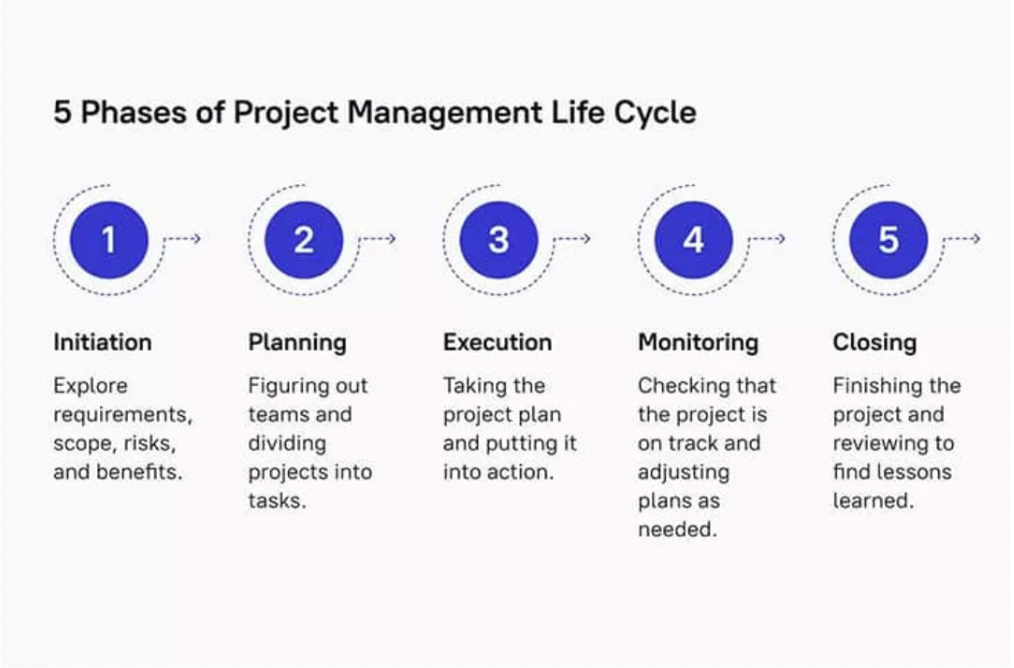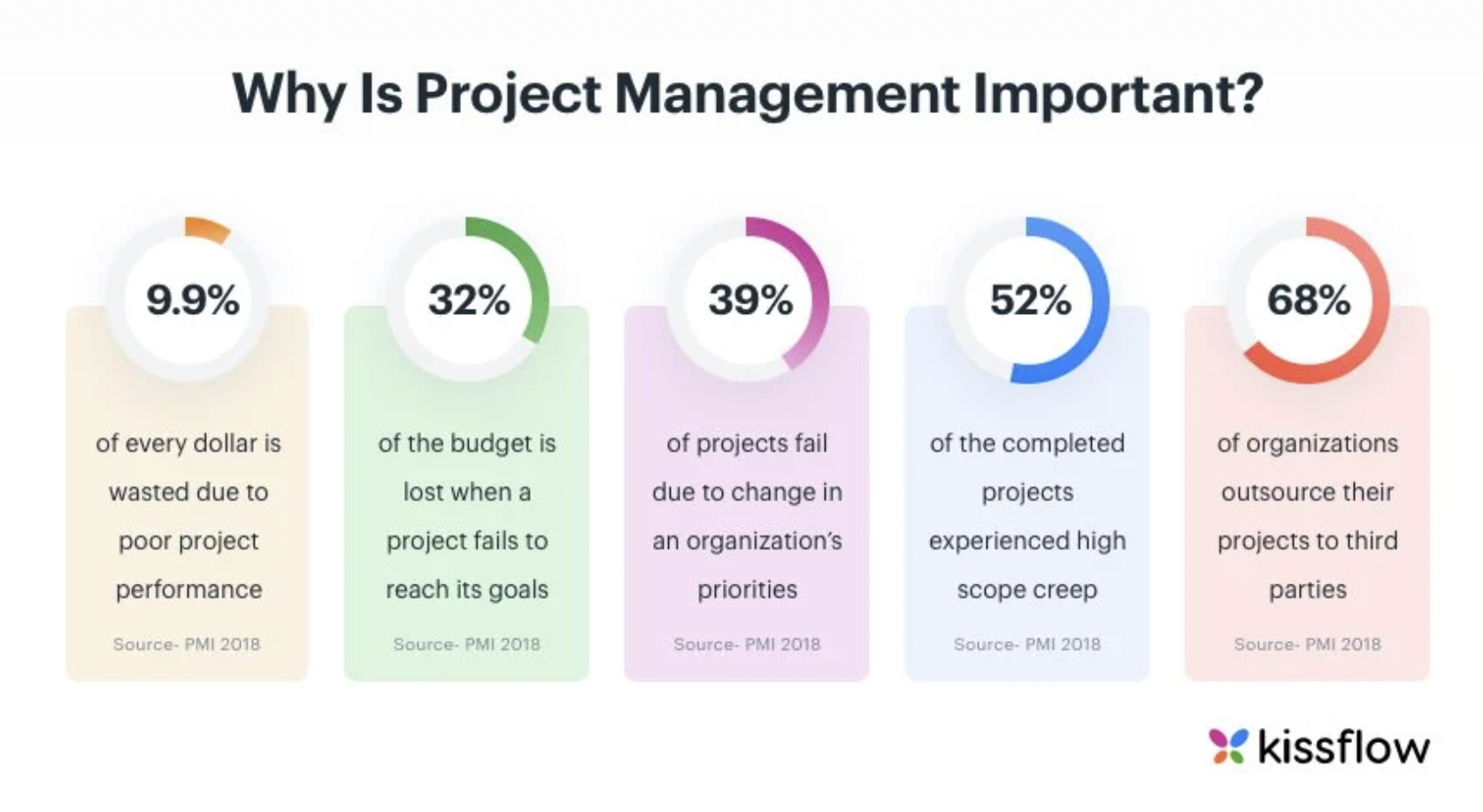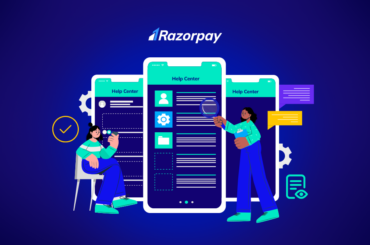What is Project Management
Project Management, by definition, means planning and organisation of resources to complete a task or project successfully. The project may be one-time or recurring, and resources include human resources, tools, systems, licenses, technology, finance and intellectual property.
A project has 5 phases: Initiation, Planning, Execution, Monitoring and Closing.
 Time, Scope and Cost are called the Triple Constraints, PM Triangle or Iron Triangle in Project Management.
Time, Scope and Cost are called the Triple Constraints, PM Triangle or Iron Triangle in Project Management.
Project Management Institute (PMI), in its Project Management Body of Knowledge (PMBOK) mentions the following ten project management knowledge areas:
- Integration Management
- Scope Management
- Schedule Management
- Cost Management
- Quality Management
- Resource Management
- Communication Management
- Risk Management
- Procurement Management
- Stakeholder Management
In the context of technical documentation projects, too, there are deliverables, timelines and constraints. Clearly, Documentation projects, too, require planning, estimation, execution and delivery.
Why Project Management is Important
Managing projects is essential for the success of the project. Let’s see how. https://kissflow.com/project/importance-of-project-management/
https://kissflow.com/project/importance-of-project-management/
- On-time Delivery: When you use Project Management principles, you track the project, report blockers and unblock them. The team works towards a common goal to deliver within a specific timeline. This ensures that you are always on time.
- Effective Resource Allocation: An essential step of Project Management is planning and effort estimation. This helps in aligning an appropriate number of human resources, estimating the tools and license requirements and budgeting for all of these needs to ensure project completion.
- Improved Productivity: The entire project is tracked end-to-end with contributions from each team member. A few of the tasks also have dependencies. When a project is tracked and managed well, every participant is more accountable towards completing their piece on time.
- Clear and Consistent Communication: Regular checkpoints and stand-ups, meetings, reports, and email communications keep all the stakeholders and team members on the same page.
- Keep All Stakeholders Involved and Informed: Clear communications and reports ensure all the stakeholders are involved and aware of the progress of the project.
- Higher Risk Tolerance: All the stakeholders are involved, a project tracker is maintained, and communications are clear, the risk can be easily identified and mitigated.
- Quality Control: The project is tracked and monitored closely, involving all the stakeholders, which ensures intense testing, easy bug detection and fixing, resulting in high-quality deliverables.
- Improved Customer Satisfaction: Projects that are managed well are on time, meeting high-quality standards which leads to high customer satisfaction.
- Learning by Retrospection: At the final stage of the project cycle, the project managers review the project to identify the areas of improvement and what went well. These are insightful learnings that can be useful for future projects.
Managing Documentation Projects
Managing documentation projects is an essential process that every Tech Writing team should consider doing. More so for long and complex projects.
Say, your client says that one of their products is undergoing a facelift, and all the screens will change. How much time do you need to update the user manual?
How do you arrive at a delivery date? You start by asking these questions:
- How many pages of the document are impacted?
- Do they have screenshots?
- How many procedures?
- Do you have access to the new screens and test environments?
- Who will review the changes?
Answers to these questions help you to understand the scope of the project.
- Decide how many writers and their experience level are required to work on this project.
- Divide the project into smaller tasks and assign them to your team members.
- Track the project and send reports to your client.
- Complete the project and hand over the updated manual on the committed delivery date.
We all do this, right? Doing all this in a phased-out manner, with appropriate planning, effort estimation and resource alignment, keeping all the stakeholders involved with clear communications is Project Management. Easy. Let us understand the different phases of the project life cycle for documentation projects in more detail.
Initiation: Concept and initiation phase of the project to understand the goals of the project. Understand the doc requirements with clear objectives, possible risks, planned timelines, key stakeholders and budget allocated for the project.
- Read through the Concept Note and Business Case to understand the project requirement in detail.
- You should have many discussions, research and analysis, such as a Feasibility study, to understand the problem you are solving and the value you will bring with this project.
- Understand the Project Scope.
- You may need to do a POC (if needed) to ensure that you are delivering what is expected.
Planning: Planning and estimation phase of the project.
- Plan the Project Schedule – Effort estimation, resource planning and timelines.
- Identify the Dependencies and Risks.
- Know who the stakeholders are and their roles in the project.
- List down the Tools. Set up processes if needed. For example, the Document Review and Approval process.
Execution: Time to put your plans into action. Start with the project.
- Start with content creation and come up with draft copies.
- Test your content.
- Get your document reviewed and incorporate the comments.
Monitoring: Regular checkpoints and tracking to ensure that the project is on track.
- Communicate to all stakeholders about project progress.
- Communicate blockers and unblock the team members.
- Make changes, prioritise or de-prioritise tasks to the project plan as required.
- Identify risks and communicate.
Closing: Complete and close the project.
- Publish the deliverables or share the documents with the client.
- Gather user feedback.
- Measure the impact of the project.
- Retrospect – what went well and areas of opportunity.
- Communicate to all stakeholders about the closure of the project.
Key Points to Consider
- Clearly understand the goals of the project – Is it worth doing it? Evaluate Effort Vs. Value.
- Define the project scope – what all you agree to do.
- Effort Estimation, Resource Allocation and Timelines – This should be done as accurately as possible after factoring in some buffer time.
-
-
-
- Do not overestimate, as you are wasting resources and may even lose the project!
- Don’t underestimate either, as this may require you to work extra hours without being paid, and nobody likes that. The quality of work also takes a hit.
-
-
-
- Stakeholders and their Roles – What is the role of each stakeholder? Who are the decision-makers?
- Communication – Who is responsible for the communications? Frequency/Medium of Communication. Progress reports.
- Tools used for tracking the project – Do you have access and the required expertise to work on the tools?
- Call out dependencies and training requirements, if any.
- Set the process for doc reviews and approvals before entering the Execution phase.
- Risks, if identified, should be communicated to the relevant stakeholders immediately.
- Acknowledge the good work of the team time and again to keep them motivated.
- Communicate project closure, impact it created and celebrate success!
- Document learnings.
Conclusion
A project that is evaluated well even before it starts, carefully planned, executed and monitored is bound to be successful. Pick up any tool – Jira, Asana, or Excel sheets, anything works. It is a matter of implementing the Project Management best practices. Teams who follow Project Management concepts feel better connected and motivated, and the results are always rewarding.





